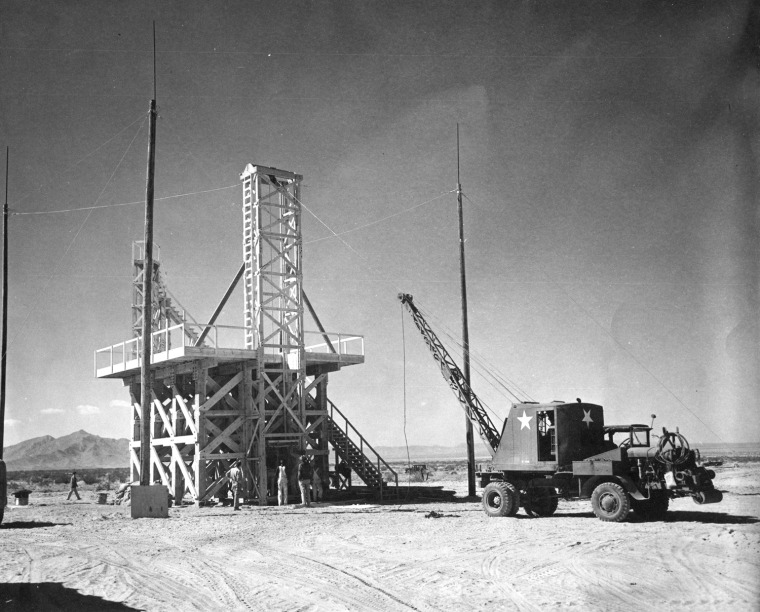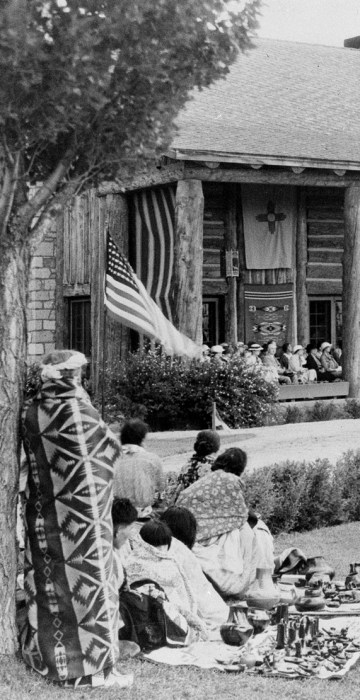
Photo
Inside Los Alamos National Laboratory

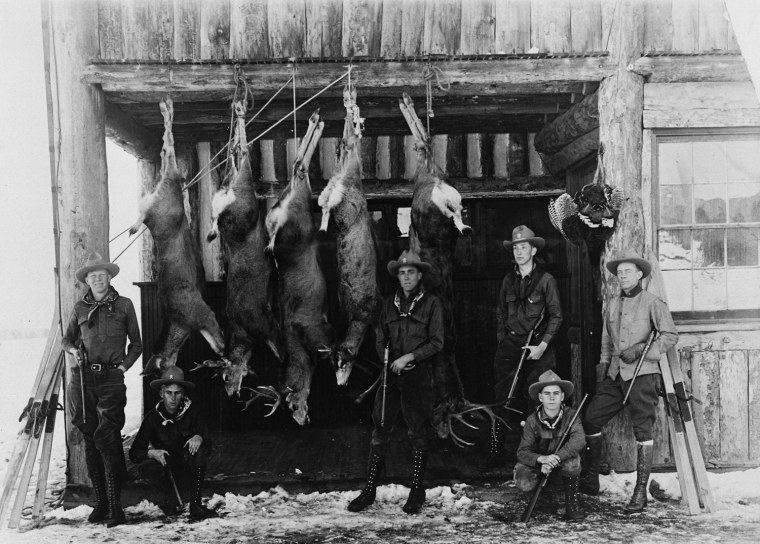
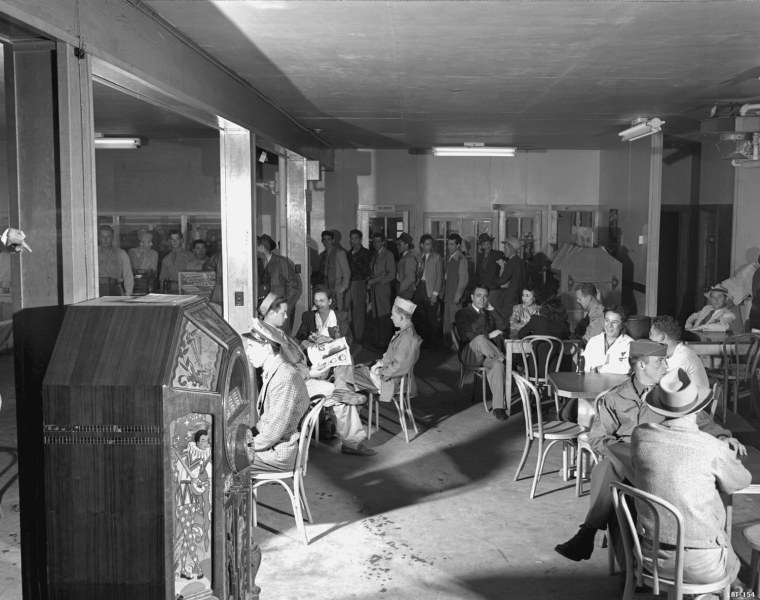
Life in Los Alamos
Workers eat at a cafeteria in Los Alamos. After the U.S. Army acquired the Ranch School property, the town's population grew exponentially. Los Alamos Laboratory, known as Project Y, was conceived during the early part of World War II because the U.S. wanted to build an atomic explosive to counter the nuclear threat posed by Germany.
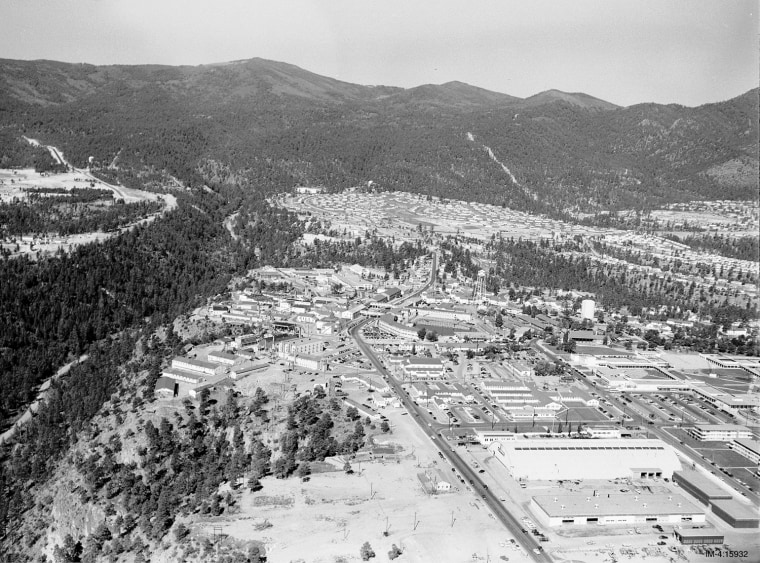
The chosen site
Aerial shot of Los Alamos in 1950. The military head of Project Y and scientific director Robert Oppenheimer wanted the top-secret nuclear project to take place in an area that was isolated yet still accessible, had an adequate water supply, a readily available work force, and a moderate climate.
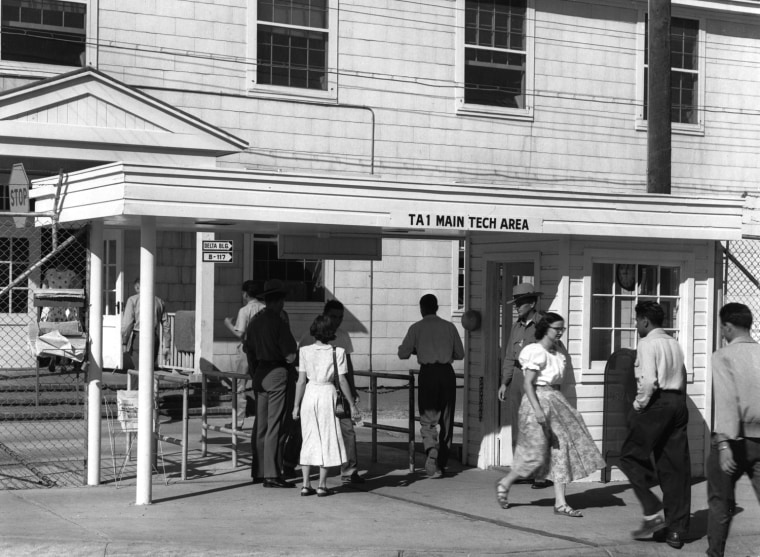
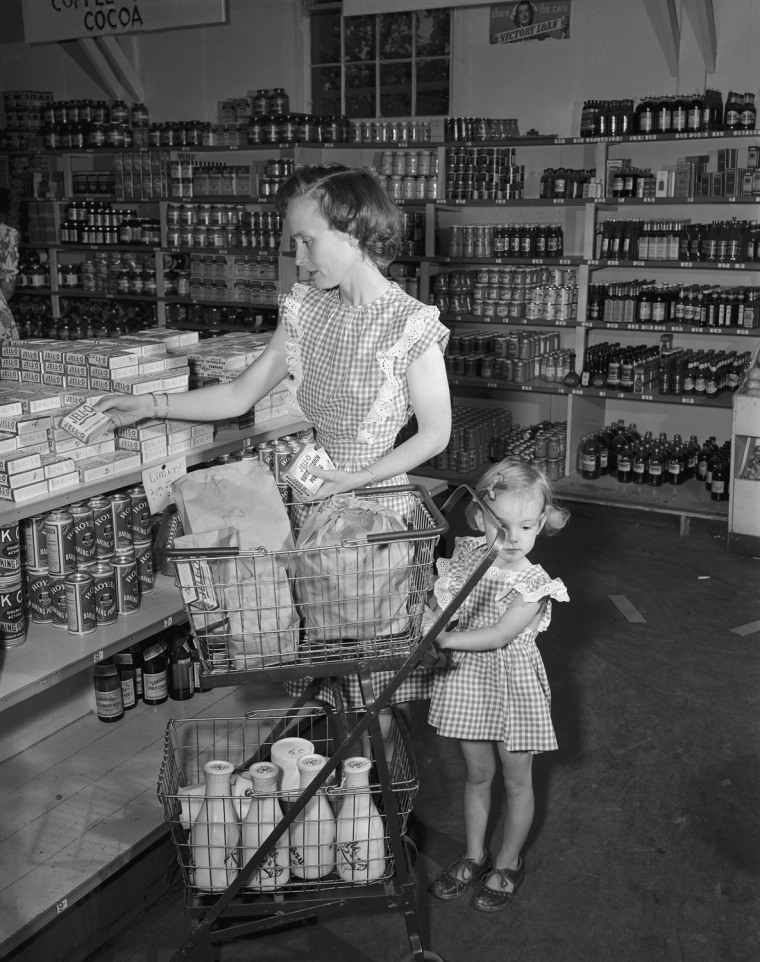
Baby Boom
A woman and her daughter shop at a Los Alamos grocery store. Many scientists brought their spouses and young children to the site, and many more babies were born in Los Alamos. By 1945, the town had more than 330 infants, and the housing demand from the growing population exceeded the supply. Authorities considered limiting future hires to singles.

A class divide
Housing for workers at Los Alamos. Laboratory workers' ranking dictated their social standing and the quality of their housing. Senior Project Y officials occupied "Bathtub Row" homes, which were previously used by Ranch School masters and were the only domiciles in Los Alamos with bathtubs. The name has stuck to this day.

'A part of history'
The remote handling of a Project Y component. "Almost everyone knew that this job, if it were achieved, would be a part of history," J. Robert Oppenheimer, the Laboratory's first director said. "This sense of excitement, of devotion, and of patriotism in the end prevailed."
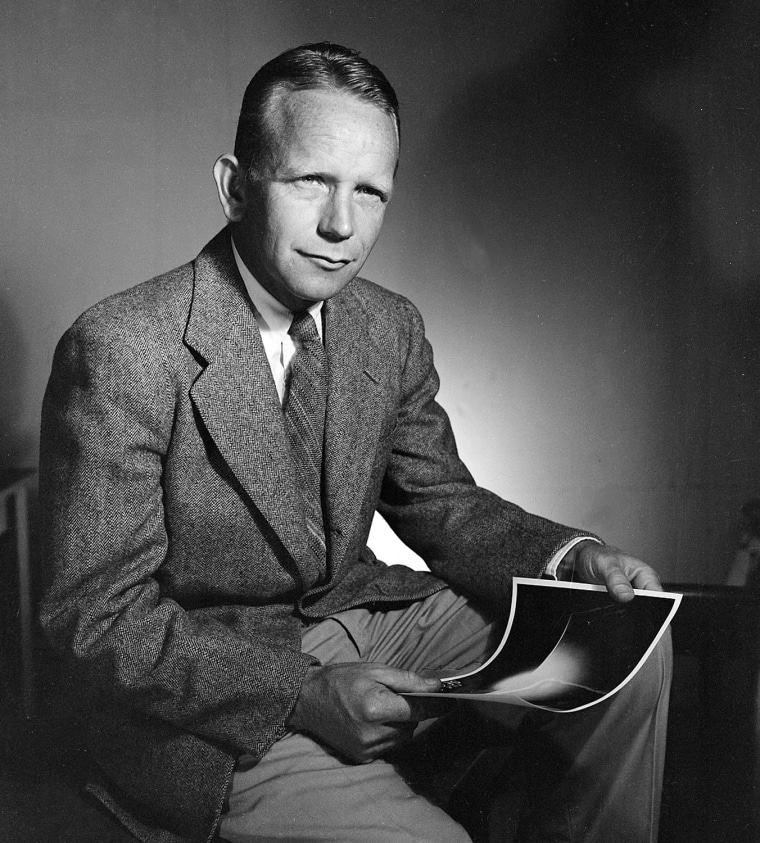
'Trinity' Test Director
Kenneth Bainbridge. The Harvard nuclear physicist joined the nuclear weapons laboratory at Los Alamos in 1943. He prepared and directed the "Trinity Test," the first explosion of a nuclear bomb. Following the successful test in the morning of July 16, 1945, Bainbridge congratulated J. Robert Oppenheimer and the others and made his legendary remark, "Now we are all sons of bitches."
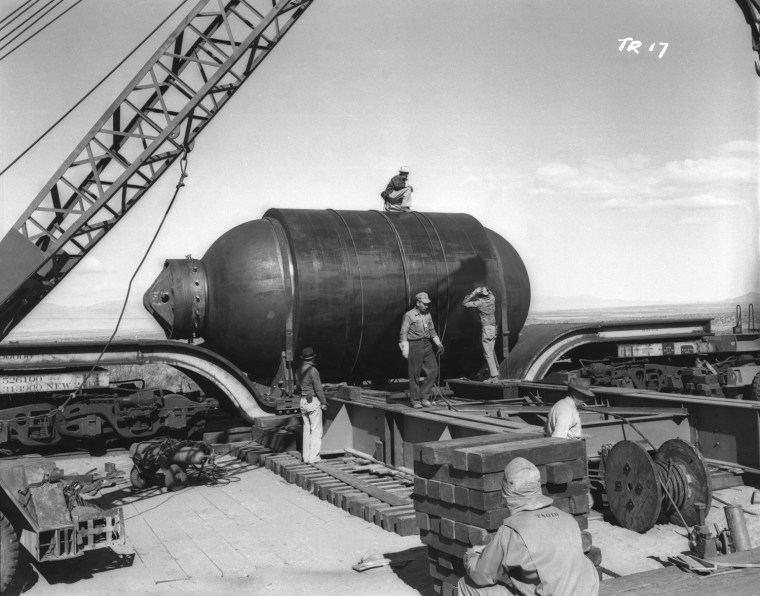
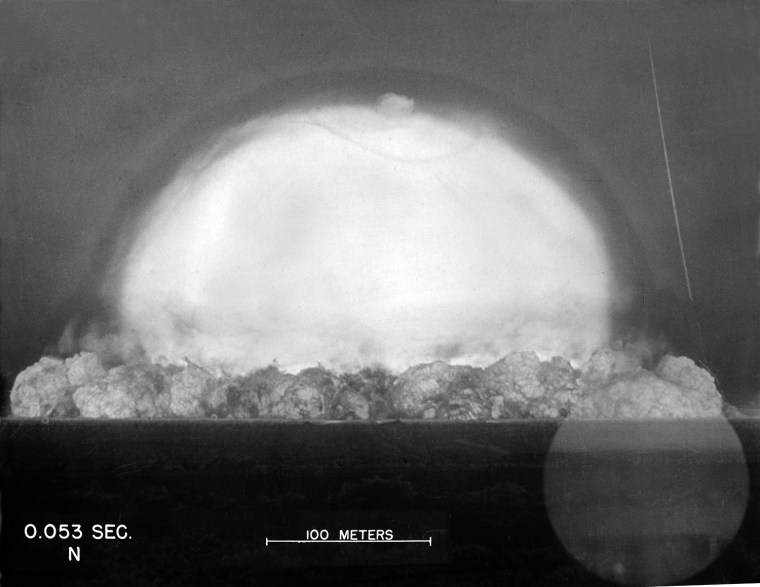
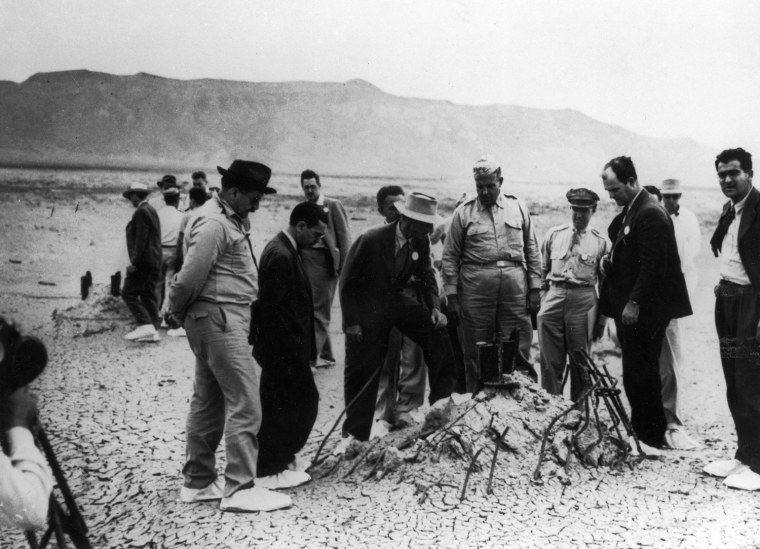
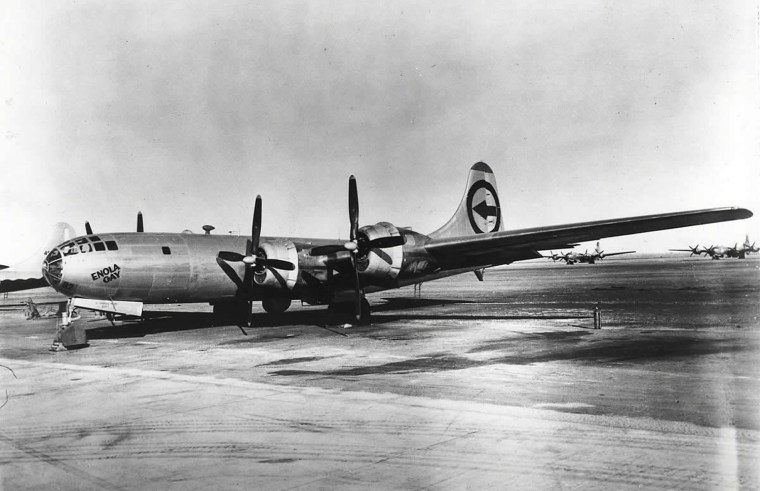
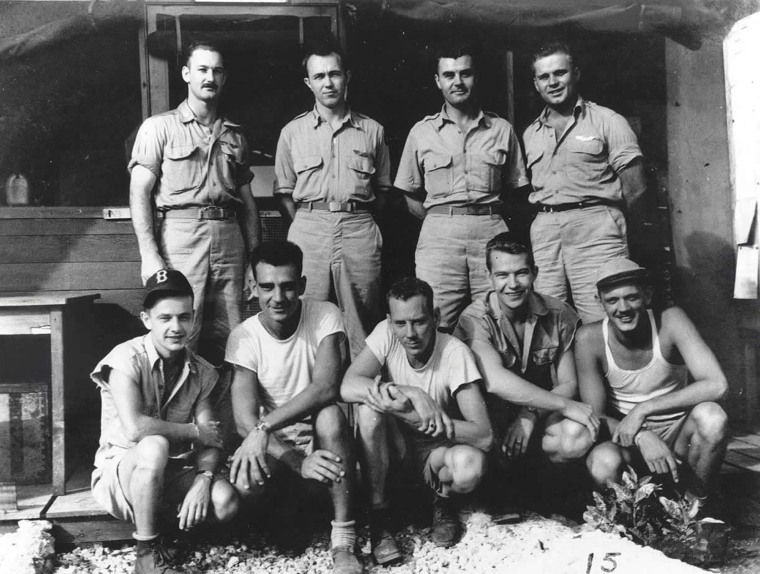
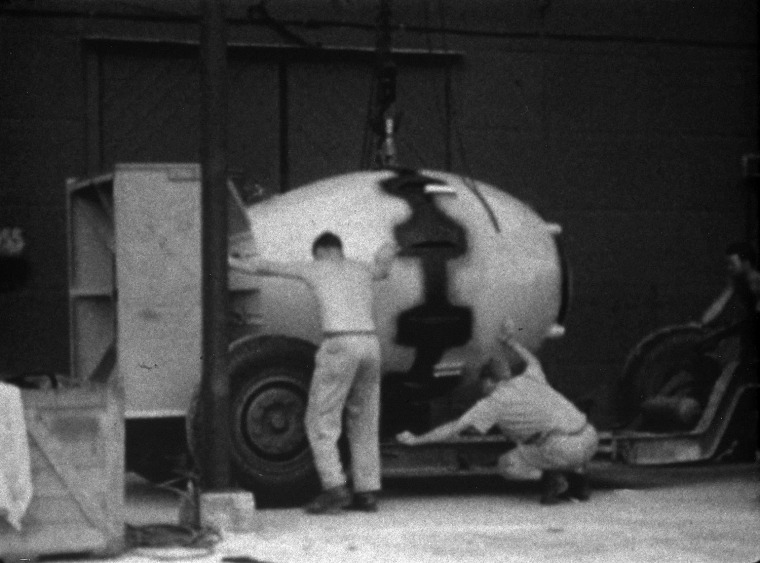
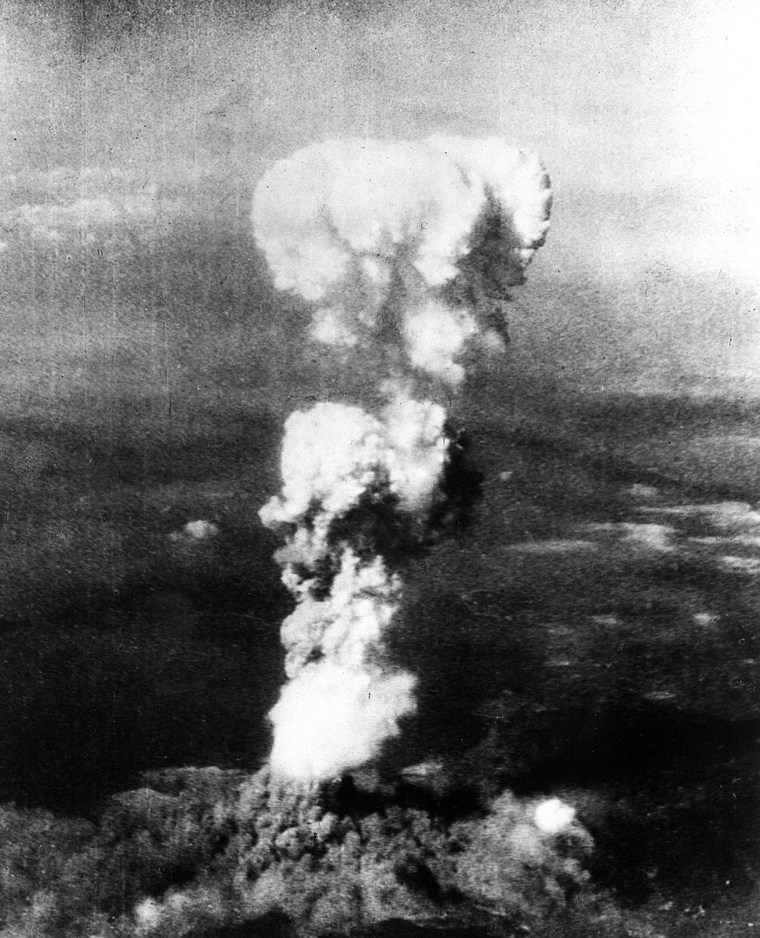
'Boiling dark colored dust'
Hiroshima Cloud. In a letter to his father, Los Alamos Ordinance Division Leader Navy Cpt. William S. Parson described the cloud following the nuclear explosion as "boiling dark colored dust." "Although the cloud was impenetrable throughout the day I have no doubt that the Jap army headquarters in Hiroshima no longer exists," Parson wrote.
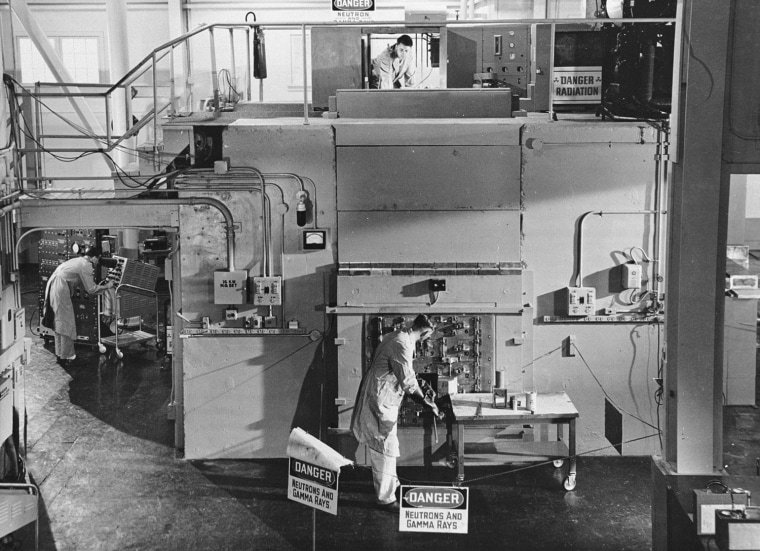
Glimpse inside the laboratory
A look inside Los Alamos National Laboratory as researchers work on a nuclear testing project in 1974. The FBI believes China had miniaturized its nuclear bombs using information stolen from Los Alamos National Laboratory in New Mexico, reported in the New York Times on March 6, 1999.
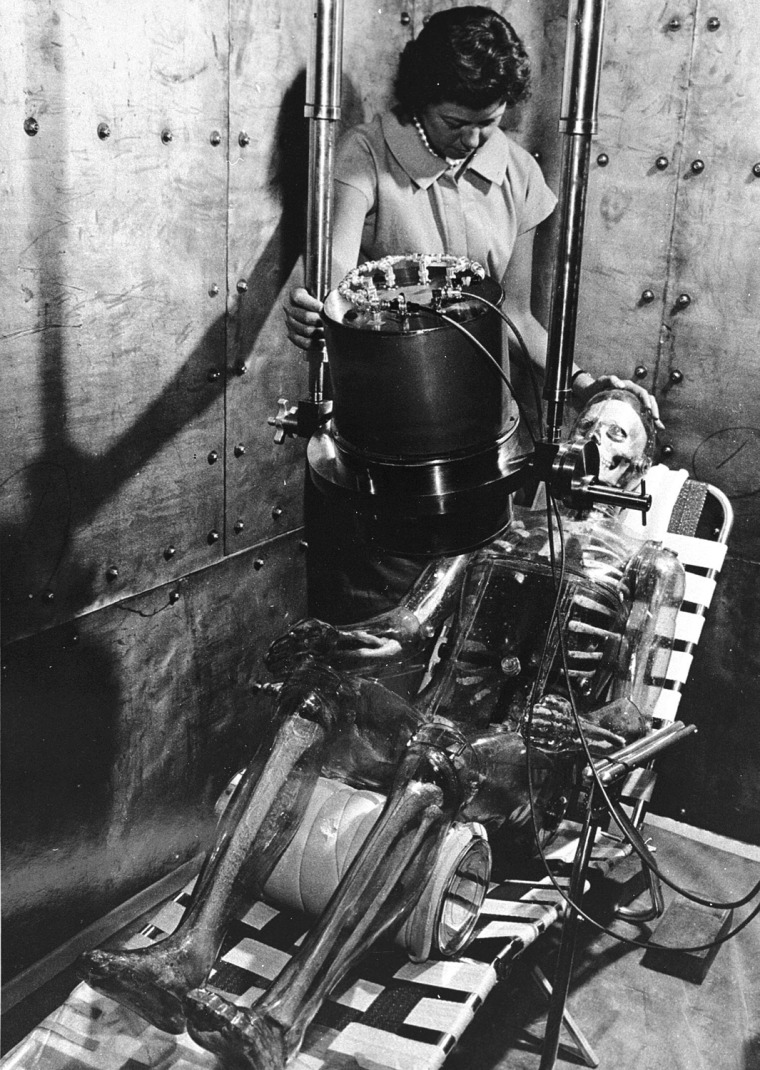
Testing, testing
Researchers work on a nuclear testing project at the Los Alamos National Laboratory in 1974. Nuclear material safeguards were implemented at Los Alamos starting in Dec. 1966, simultaneous with the Treaty on Nonproliferation of Nuclear Weapons.
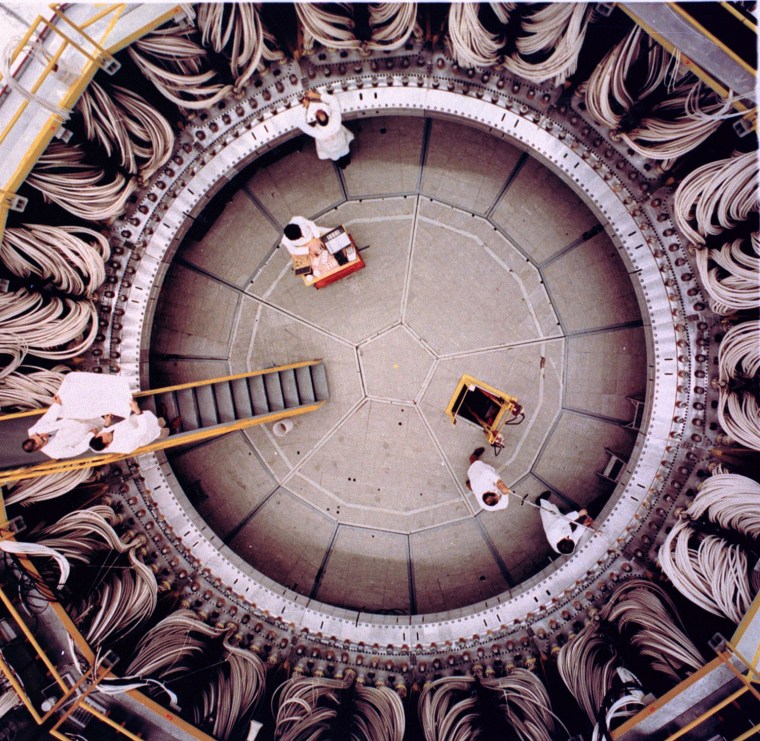
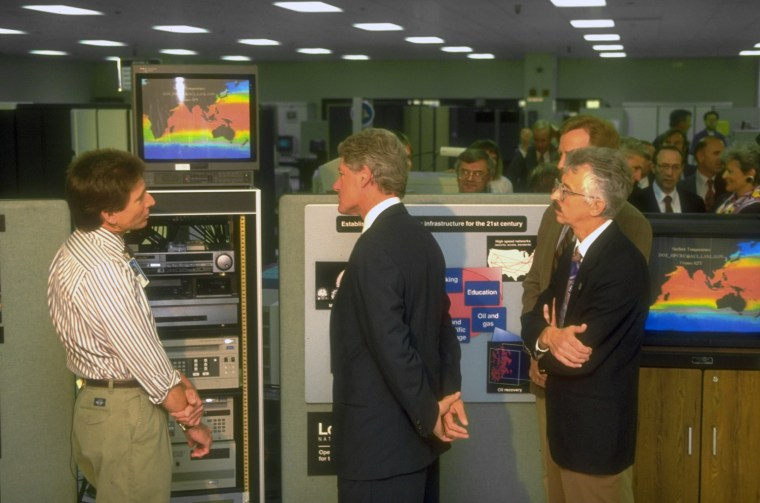
Presidential Visit
President Bill Clinton, one of only two presidents to visit the Lab, tours the Los Alamos National Laboratory research facility in May, 1993. President John F. Kennedy came to Los Alamos in 1962 as part of a tour of western United States defense installations.
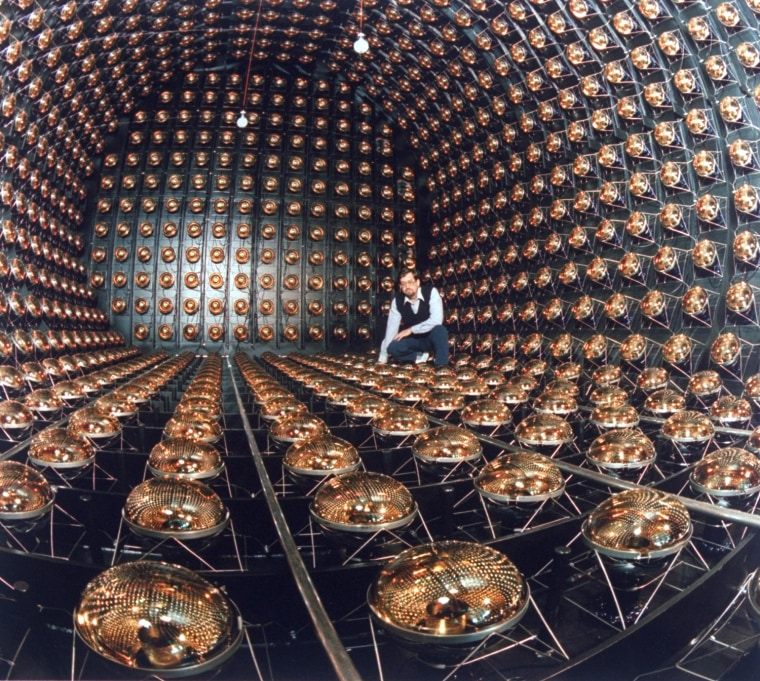
Scientific advances
A technician is seen inside a photo tube detector tank at Los Alamos National Laboratory in Jan. 1995. Later that year, scientists at Los Alamos announced they had completed a physical map of human chromosome 16 as part of the Human Genome Project.
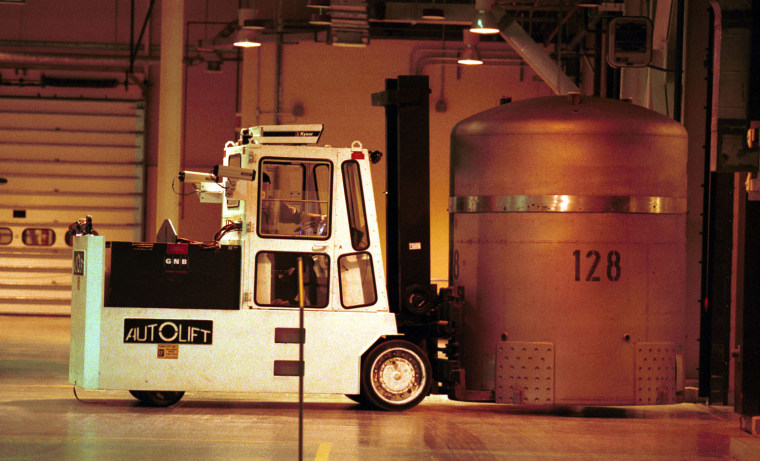
Waste Disposal
The waste site known as the Waste Isolation Pilot Plant near Carlsbad, N.M. receives a shipment from the Los Alamos National Laboratory in March, 1999. The site became the nation's first operating underground repository for permanent disposal of defense-generated transuranic waste.
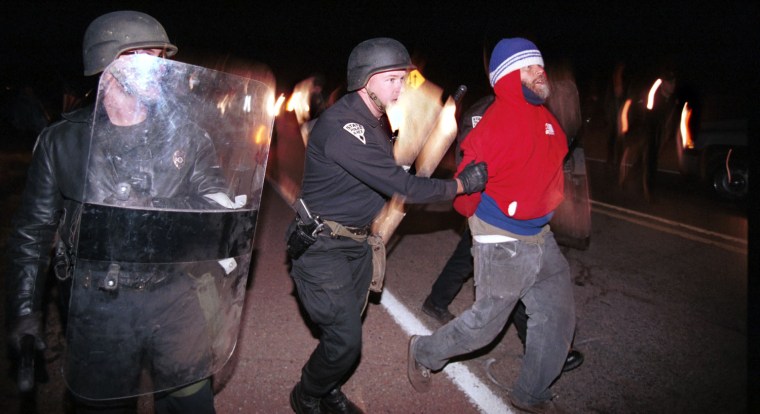
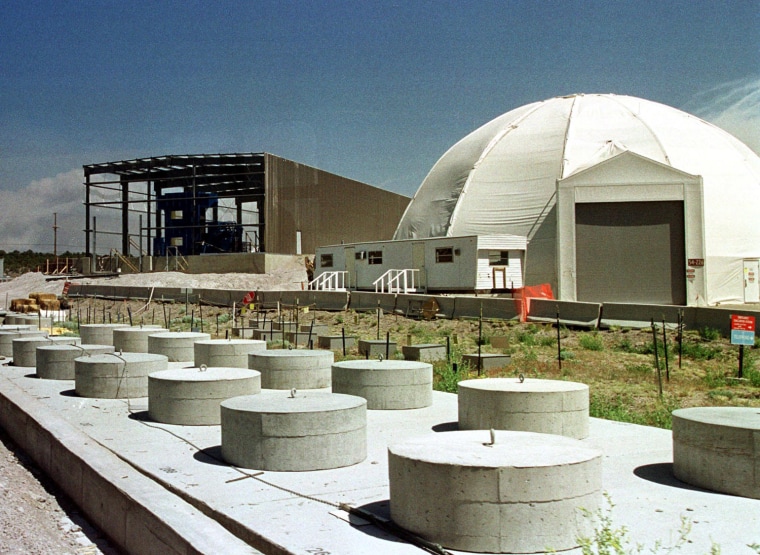

Wildfires in 2000
Aerial view of a section of the Los Alamos National Laboratory called Technical Area 16, where weapons scientists store and use uranium in their research. The structure on the upper right is a handling and manufacturing facility for weapon components. The photo was taken in May, 2000 and shows the Lab area surrounded by the Cerro Grande fire.
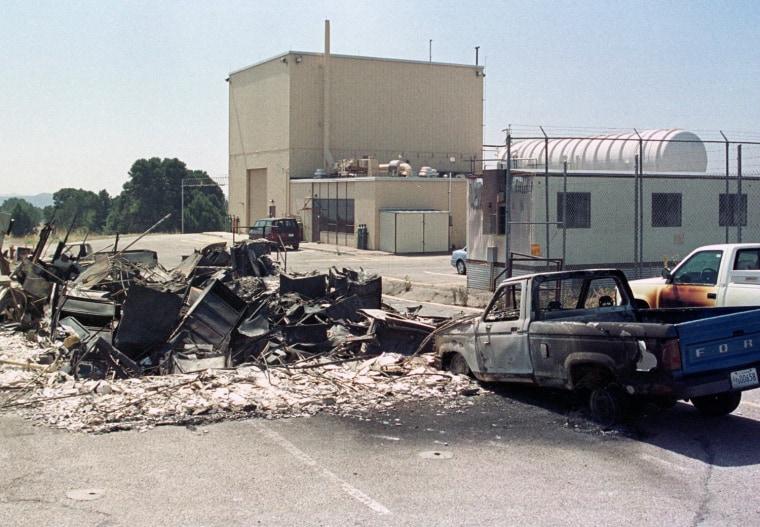

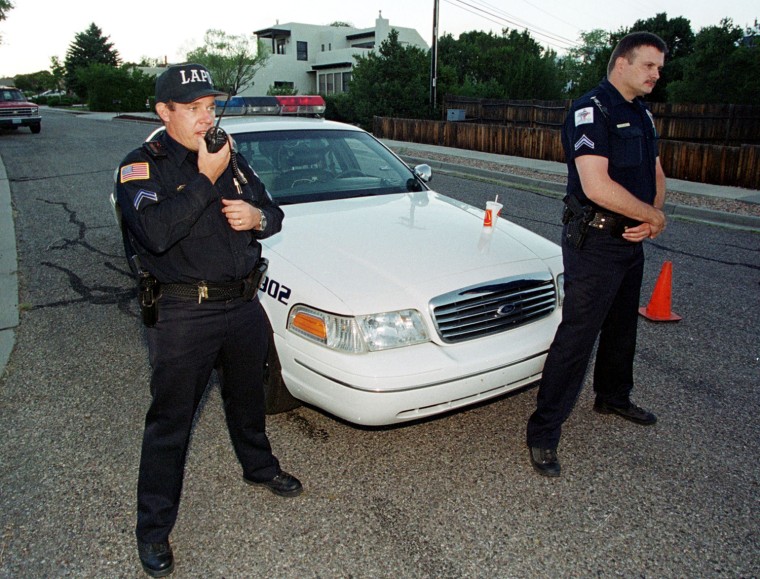
The Wen Ho Lee Saga
Los Alamos police officers supervise a road block in White Rock, N.M. at the end of a street where suspected spy Wen Ho Lee lived. Federal agents were searching Lee's home in preparation for Lee's release from jail on Sept. 1. Lee, 60, had been jailed since his arrest in Dec. 1999 on 59 counts alleging he transferred restricted data about nuclear weapons to unsecured computers and tape at the Los Alamos National Laboratory.
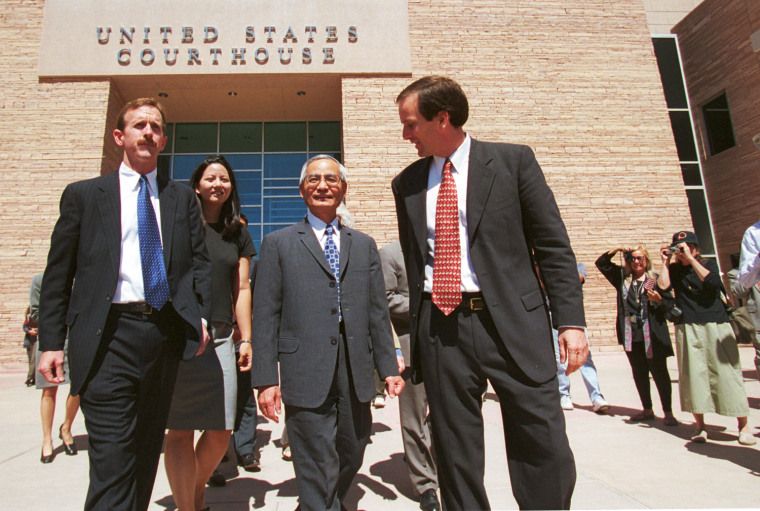
The Wen Ho Lee Saga
Joined by his daughter and his lawyers, Wen Ho Lee steps out of the federal courthouse in Sept. 2000 in Albuquerque, N.M. The former Los Alamos National Laboratory scientist, who spent nine months in solitary confinement, was released from prison after pleading guilty to a single felony count of inappropriately downloading nuclear weapons data while working at the lab. The guilty plea was part of a plea agreement in which 58 other felony counts were dismissed. Lee received $1.6 million in June, 2006 from the federal government and five media organizations as part of a settlement of a civil suit he had filed against them for leaking his name to the media before formal charges had been filed against him.
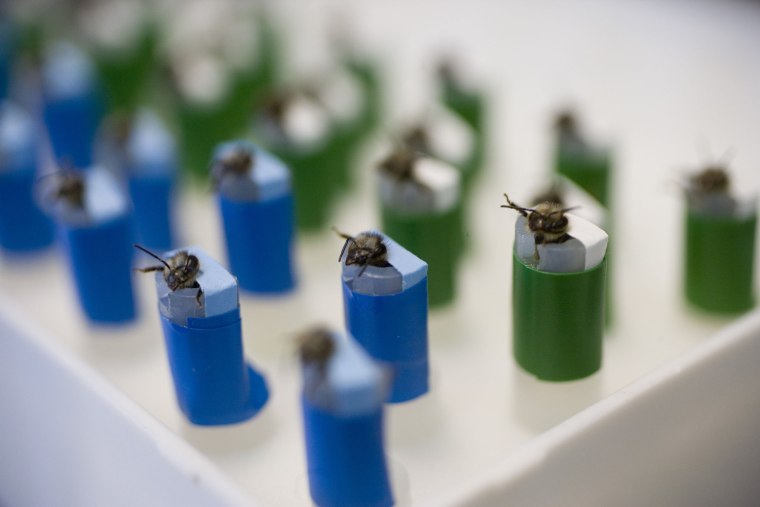
Biological weapons
In this Nov. 2006 photo, bomb-sniffing honey bees are shown in their custom-designed harnesses before going to work sniffing out explosives. Using Pavlovian-like techniques, Los Alamos researchers are taking advantage of the bees' keen sense of smell and their love of nectar to produce weapons in the war on terror.
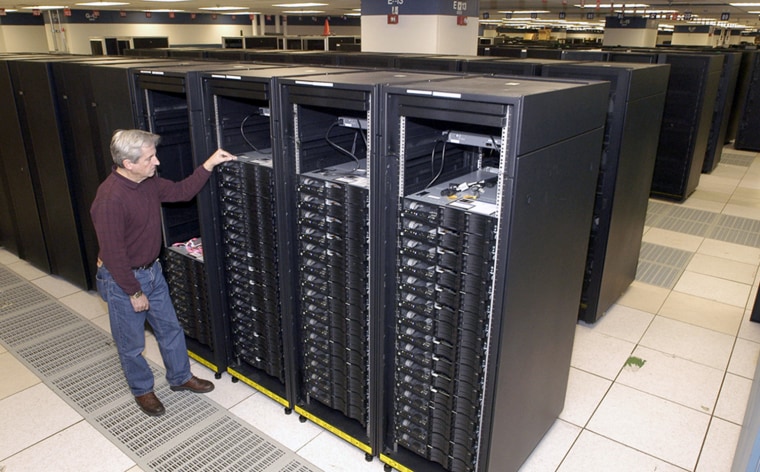
Fast Technology
Don Grice, lead engineer of IBM, inspects the world's fastest computer, nicknamed "Roadrunner", in the company's Poughkeepsie, N.Y. plant. Scientists unveiled the supercomputer on June 9, 2008, a $100 million machine that performed 1,000 trillion calculations per second in a sustained exercise. The technology breakthrough was accomplished by engineers from the Los Alamos National Laboratory and the IBM Corp. on a computer to be used primarily on nuclear weapons work, including simulating nuclear explosions.
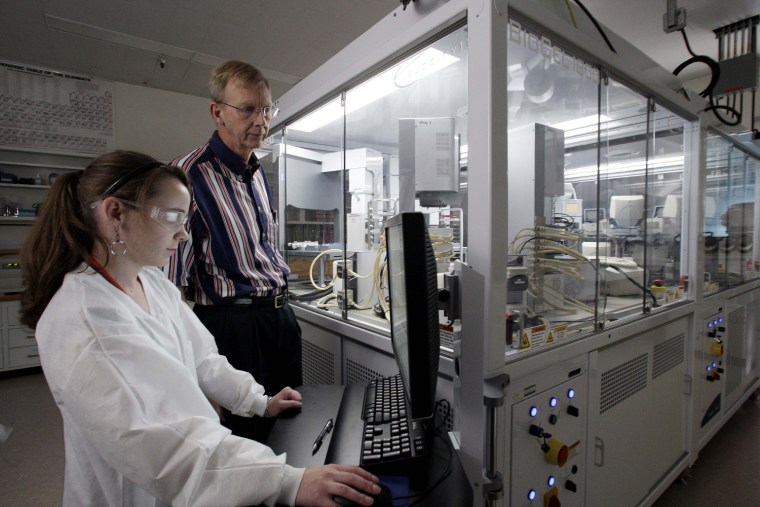
Looking toward the Future
In this July, 2009 photo, Dr. Tony J. Beugelsdijk, right, group leader in the chemistry division, and Cheryl Gleasner, research technologist, work in the Los Alamos National Laboratory with the genome sequencing machine, which is designed to test millions of animal samples quickly.
